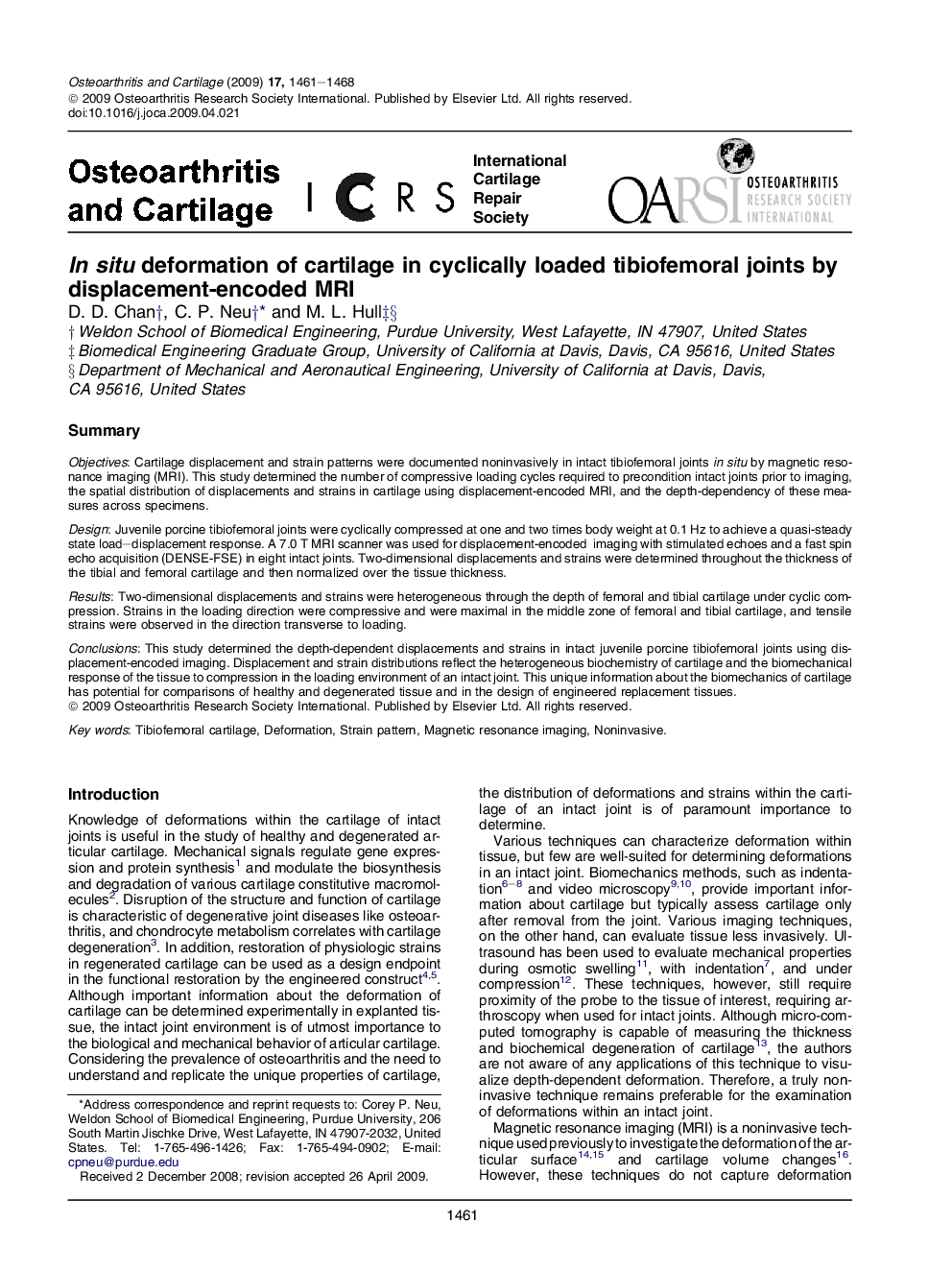| Article ID | Journal | Published Year | Pages | File Type |
|---|---|---|---|---|
| 3380688 | Osteoarthritis and Cartilage | 2009 | 8 Pages |
SummaryObjectivesCartilage displacement and strain patterns were documented noninvasively in intact tibiofemoral joints in situ by magnetic resonance imaging (MRI). This study determined the number of compressive loading cycles required to precondition intact joints prior to imaging, the spatial distribution of displacements and strains in cartilage using displacement-encoded MRI, and the depth-dependency of these measures across specimens.DesignJuvenile porcine tibiofemoral joints were cyclically compressed at one and two times body weight at 0.1 Hz to achieve a quasi-steady state load–displacement response. A 7.0 T MRI scanner was used for displacement-encoded imaging with stimulated echoes and a fast spin echo acquisition (DENSE-FSE) in eight intact joints. Two-dimensional displacements and strains were determined throughout the thickness of the tibial and femoral cartilage and then normalized over the tissue thickness.ResultsTwo-dimensional displacements and strains were heterogeneous through the depth of femoral and tibial cartilage under cyclic compression. Strains in the loading direction were compressive and were maximal in the middle zone of femoral and tibial cartilage, and tensile strains were observed in the direction transverse to loading.ConclusionsThis study determined the depth-dependent displacements and strains in intact juvenile porcine tibiofemoral joints using displacement-encoded imaging. Displacement and strain distributions reflect the heterogeneous biochemistry of cartilage and the biomechanical response of the tissue to compression in the loading environment of an intact joint. This unique information about the biomechanics of cartilage has potential for comparisons of healthy and degenerated tissue and in the design of engineered replacement tissues.
